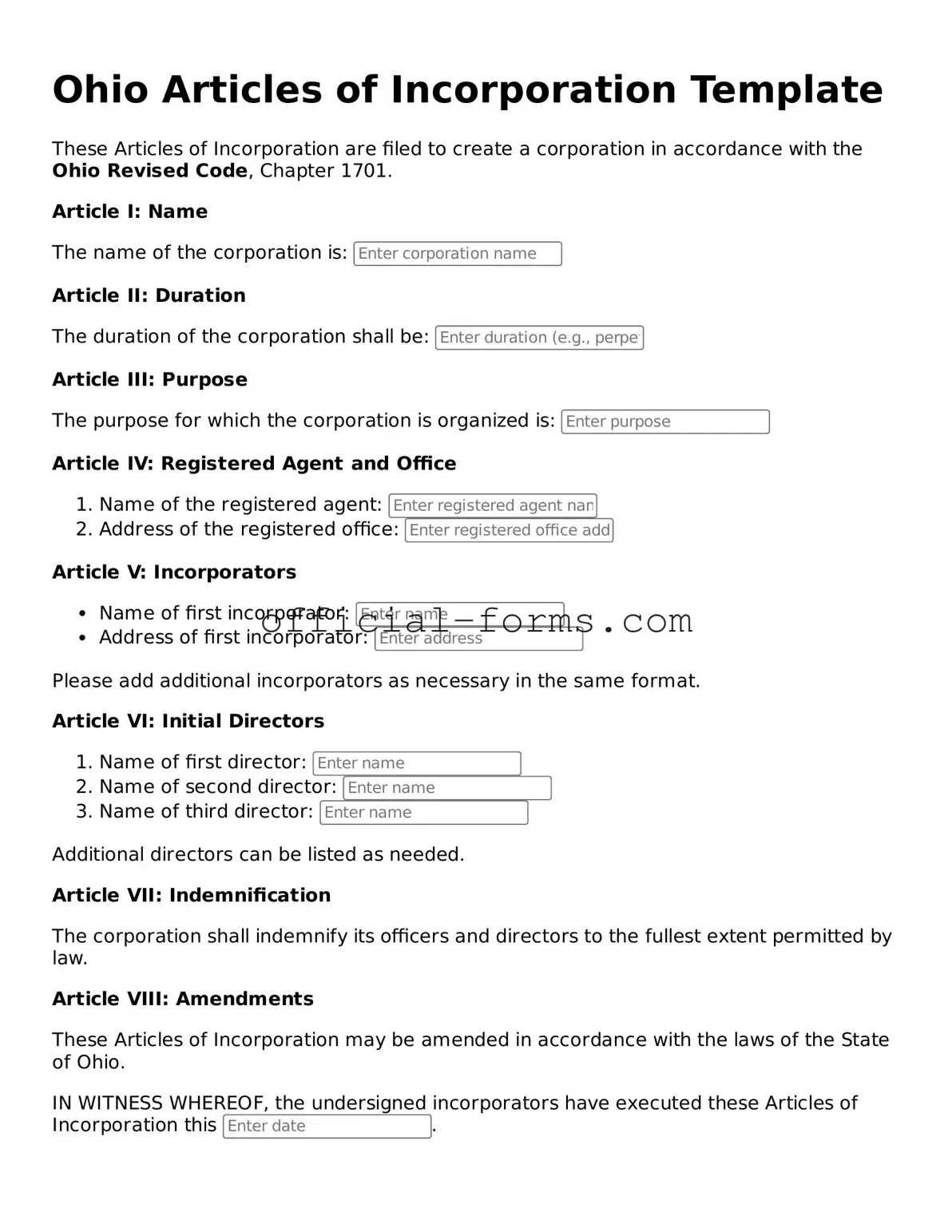Filling out the Ohio Articles of Incorporation form can be a straightforward process, but many people make common mistakes that can lead to delays or complications. One frequent error is providing incorrect or incomplete information. Each section of the form must be filled out accurately. Missing details can result in the application being rejected.
Another common mistake is failing to include the required signatures. The form must be signed by the incorporators. If a signature is missing, the state will not process the application. It is essential to double-check that all necessary parties have signed before submission.
Some individuals overlook the importance of choosing a unique business name. The name must not only comply with Ohio naming rules but also must be distinct from existing businesses. A name that is too similar to another can lead to rejection of the application.
People often forget to include the correct filing fee. Each type of corporation has a different fee associated with it. Submitting the wrong amount can cause delays or result in the application being returned.
Another mistake is not providing a registered agent's information. The registered agent must have a physical address in Ohio. Failing to include this information can lead to complications in receiving legal documents.
Some applicants do not specify the purpose of the corporation clearly. A vague description can lead to confusion and may not meet state requirements. It is important to be as specific as possible about what the business will do.
Inaccurate information about the incorporators is another common issue. All incorporators must be listed correctly, including their names and addresses. Errors here can lead to challenges in establishing the corporation.
Many people also neglect to review the form thoroughly before submission. Simple typos or errors can create problems. Taking the time to proofread can save a lot of hassle later on.
Some applicants fail to understand the difference between a corporation and other business structures. Choosing the wrong type of entity can have significant legal and tax implications. It is crucial to know what type of business structure is best suited for your needs.
Finally, not keeping a copy of the submitted form is a mistake many make. Having a copy can be helpful for future reference. It can also assist in tracking the status of the application. Keeping organized records is vital for any business owner.
